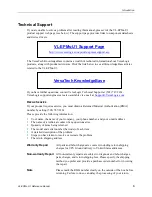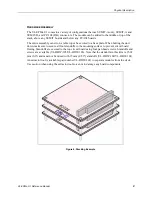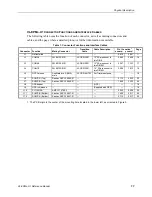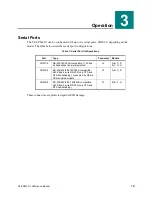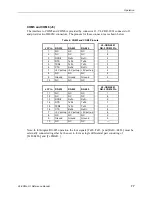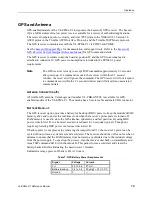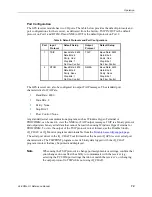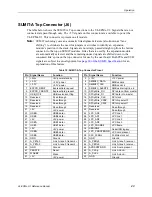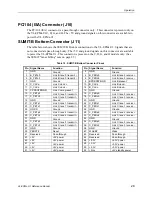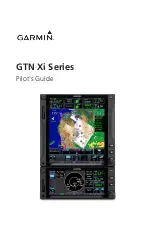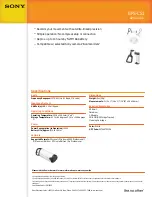
Operation
VL-EPMs-U1 Reference Manual
19
Port Configuration
The GPS receiver module has two I/O ports. The table below provides the default protocols and
port configurations for the receiver, as delivered from the factory. TSIP IN/OUT is the default
protocol on Port 1 and RTCM-IN and NMEA-OUT is the default protocol on Port 2.
Table 8: Default Protocols and Port Configurations
Port
Input
Protocol
Default Setup
Output
Protocol
Default Setup
1
TSIP
Baud Rate: 9600
Data Bits: 8
Parity: Odd
Stop Bits: 1
No Flow Control
TSIP
Baud Rate: 9600
Data Bits: 8
Parity: Odd
Stop Bits: 1
No Flow Control
2
RTCM
Baud Rate: 4800
Data Bits: 8
Parity: None
Stop Bits: 1
No Flow Control
NMEA
Baud Rate: 4800
Data Bits: 8
Parity: None
Stop Bits: 1
No Flow Control
The GPS receiver can also be configured to output TAIP messages. The standard port
characteristics for TAIP are:
Baud Rate: 4800
Data Bits: 8
Parity: None
Stop Bits:1
Flow Control: None
Any standard serial communications program, such as Windows Hyper-Terminal or
PROCOMM, can be used to view the NMEA or TAIP output messages. TSIP is a binary protocol
and outputs raw binary serial data that cannot be read when using Windows Hyper-Terminal or
PROCOMM. To view the output of the TSIP protocol in text format, use the Trimble Studio,
iQ_CHAT, or iQ_Monitor programs downloadable from the
Trimble Lassen iQ support page
.
The serial port driver in the iQ_CHAT Tool Kit matches the Lassen iQ GPS receiver serial port
characteristics. The TSIPPRNT program converts binary data logged with the iQ_CHAT
program into text that may be printed and displayed.
Note
When using the TSIP protocol to change port assignments or settings, confirm that
your changes do not affect the ability to communicate with the receiver (e.g.,
selecting the PC COM port settings that do not match the receiver’s, or changing
the output protocol to TSIP while not using iQ_CHAT).

